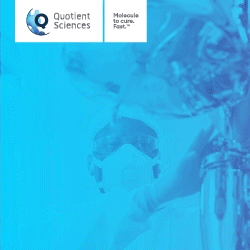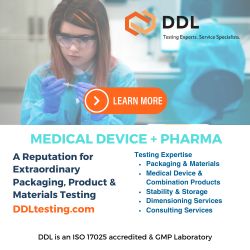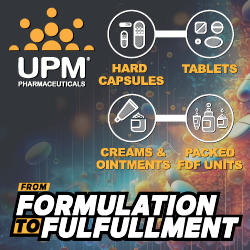Issue:May 2024
CLINICAL TRIALS - Enhancing Clinical Trials: A Strategic Framework for Positive Site-Sponsor Relationships
INTRODUCTION
In today’s challenging clinical trial landscape, the importance of building positive site experiences and fostering strong relationships between sponsors and sites cannot be overstated. As sponsors strive to secure sites and establish themselves as a sponsor of choice for projects, it is essential to address two fundamental questions: How can we best serve the needs of the sites? How can the sites best support our trial needs?
To answer these questions, we propose a framework of requirements that sponsors and contract research organizations (CROs) often struggle to address.
The following will delve into the key elements of such a framework, designed to cultivate positive site-sponsor relationships. By examining shifts in trial strategy and execution, we can pave the way for a collaborative, mutually beneficial environment, and a sustainable competitive advantage.
INTERACT WITH A SITE AS A SINGLE, ALIGNED & CONNECTED ORGANIZATION
To truly unlock the potential of a strong site-sponsor relationship, it is crucial to operate as a single, aligned, and connected organization when interacting with sites. This requires a shift in mindset in which we balance the prioritization of the organization and those of the individual studies. By adopting a portfolio planning approach, we can align our strategies with trial needs and objectives, creating a complete picture from top to bottom.
While portfolio planning is not a novel concept, many organizations struggle to move beyond study-centric operations. The symptoms of operating with an overemphasis on study-centric operations are evident in disconnected and repetitive site-sponsor interactions, leaving sites frustrated. The remedy lies in shifting the focus toward indication or portfolio planning and feasibility strategy.
Portfolio planning still considers the individual study objectives, but it establishes a collective understanding of all trials being planned across a therapeutic area, indication, region, or other grouping where sites may overlap. Then, it uses this appreciation to identify operational and strategic efficiencies across trials. Decisions are made collectively, with the primary objective of achieving the best outcome for both the sponsor and the sites.
With an understanding of requirements at a portfolio level, we can identify synergies and opportunities to operationalize multiple studies in parallel at the same site. The exercise also helps identify and elevate the most strategic sites across the sponsor enterprise. Effective portfolio planning provides numerous benefits, including:
- Maximizing internal resources by identifying and eliminating repetitive work
- Respecting site resources by considering site contributions strategically
- Streamlining operational aspects such as feasibility surveys and regulatory document requests
However, it’s important to note that an effective strategy is only half of the equation. To truly realize the potential of portfolio planning and resource allocation, organizations must empower their teams with systems, technology, and data that enable them to be informed and connected. Without these tools, even the best strategies can fall short of expected outcomes.

REDESIGN DATA COLLECTION, ACCESS & GOVERNANCE FOR CONNECTED INTELLIGENCE
In the quest for a comprehensive and strategic approach to trial operations, connected intelligence plays a crucial role. Maintaining visibility and tracking progress requires data to be connected and easily accessible. One area where this connectivity is often lacking is in the collection and utilization of feasibility data.
Traditionally, feasibility assessments have been treated as transactional exercises, focusing solely on meeting the specific needs or endpoints of a particular study. This approach typically involves conducting a one-time survey using a general-purpose tool and saving the data in a siloed repository such as SharePoint. As a result, a proactive team that wants to access historical data would face the arduous task of manually searching through folders and files. Even if past feasibility assessments were found, their ability to provide a holistic understanding may be limited. To truly harness the potential of feasibility data, it must be treated as a valuable asset and supported by a process and system that respects its significance.
Let’s delve into a feasibility system that considers the interconnectedness of people, processes, data, and technology. While the concept of treating feasibility assessments as an enterprise activity is not complex, the operational reality often sees teams working in silos with limited awareness of how data can be collected, standardized, and leveraged across assessments within a program or across multiple programs. To enable connected intelligence, it is essential to integrate feasibility data at the portfolio, study, and site level, creating a single asset that is centralized, connected, and indexed to a single source of truth.
Looking at site data as a unified asset may seem complex due to the various ways it can be segmented. However, we present a framework that allows data to be collected at different levels for different use cases, each adding its own value:
- Profiles of investigators and facilities
- Questions aligned with specific indications or therapeutic specialties
- Questions aligned with particular studies or protocols
- Questions aligned with individual sites
While the concept of site and investigator profiles has been explored in the industry, its implementation is crucial. Without a plan to integrate this data into a single asset, its value remains limited. The strategy should encompass the full scope of site data as one unified asset. To ensure this asset can be effectively leveraged and maintained, several critical factors must be in place:
- Data should be standardized, centralized, and governed by robust data governance practices
- Data should be accessible, with clear categorization and indications attributed
- Data should be dynamic, allowing users to utilize scoring algorithms based on expected answers and historical data
- Data collection should primarily occur directly from investigators through a technology that enables features such as data refreshes and response pre-population in order to establish a single source of truth
By redesigning data collection, access and governance for connected intelligence, organizations can unlock the full potential of feasibility data to facilitate informed decision-making, enhanced collaboration, and a deeper understanding of trial operations.

ESTABLISH A MUTUAL UNDERSTANDING BETWEEN THE SPONSOR & SITE
To build strong and effective relationships, it is essential to start with building a mutual understanding between sponsors and sites. Moving beyond transactional study/site interactions and striving for sponsor-site partnerships are key to achieving this goal. Partnerships begin by looking outside of what a site can do for the immediate need and asking two fundamental questions: How can we best serve this site’s needs? How can this site best serve our short-term and long-term trial needs?
Characteristics of transactional relationships:
- Communication is one-way, initiated when study opportunities arise
- The focus is on finalizing site selection
- The primary driver of engagement is determining whether the site can meet the sponsor’s needs
Characteristics of partnership relationships:
- Sponsors approach sites to understand and appreciate the unmet clinical needs of their patients
- Early engagement is sought to gather feedback on the study design
- The primary driver of engagement is determining how the sponsor can meet the site’s needs
Partnership relationships built on a mutual understanding lead to multi-study engagements, prioritized patient recruitment, and ultimately improved treatment. By nurturing these relationships, sponsors and sites can work together more effectively, leading to improved outcomes.
So, how can we build strong and effective site experiences and relationships? The answer lies in acting as a single coordinated organization when interacting with a site. When this aspect is missing, it leaves sites frustrated by the lack of connection or appreciation from different study teams. Sites are eager to contribute their input into protocol design, readiness assessments and preferences for technology and tools.
Sponsors can implement various measures to facilitate these interactions, such as adopting master confidential and disclosure agreements (MCDAs), establishing rate card budgets, and implementing site communication plans. These initiatives help alleviate the burden on sites and ensure a more collaborative and supportive environment.
BENEFITS OF A FRAMEWORK FOR BUILDING STRONG SITE-SPONSOR RELATIONSHIPS
Building strong site-sponsor relationships and fostering a collaborative ecosystem requires a strategic framework encompassing key pillars. By operating as a single, aligned, and connected organization when interacting with sites, we establish a solid foundation for success. This framework comprises three essential elements: portfolio planning, connected intelligence in data management, and establishing a mutual understanding between sponsors and sites.
First, portfolio planning provides a strategic approach to trial operations, allowing organizations to optimize resource allocation, enhance study planning and design, and respect site resources. By considering the broader picture and aligning trial strategies with strategic goals, sponsors and CROs can maximize internal resources, identify operational synergies, and strategically select sites based on the overall portfolio’s needs.
Second, connected intelligence transforms the way data is collected, accessed, and governed throughout the trial process. By integrating feasibility data at the portfolio, study, and site level, organizations can create a centralized and standardized asset that serves as a single source of truth. This connected data approach empowers teams with comprehensive information, facilitates informed decision-making, and enhances collaboration between sponsors, sites, and investigators.
Last, establishing a mutual understanding between sponsors and sites is vital for fostering true partnerships. By moving beyond transactional study-site interactions and actively seeking to understand and appreciate each other’s needs, sponsors can prioritize site input in protocol design, readiness assessments, and technology preferences. This mutual understanding leads to multi-study engagement, prioritized patient recruitment and ultimately, more successful clinical trials.
By adopting this framework, organizations can build strong site experiences and cultivate meaningful relationships. This approach not only improves trial outcomes but also accelerates the development of innovative therapies for the benefit of patients worldwide. It requires a shift in mindset, embracing a collaborative and interconnected approach that values the contributions of all stakeholders involved in the clinical trial journey.
Together, let us embrace this framework for building strong site-sponsor relationships, revolutionizing the way we conduct clinical trials, and transforming the landscape of healthcare innovation.

Matthew Jones is the Senior Product Owner for Study Start-Up Technology at GSK. In this role, he is responsible for SSU technology strategy and execution. Previously Matt was Feasibility Lead at IQVIA Technologies, where he oversaw the design and delivery of the company’s purpose-built feasibility offerings. He is driven by a passion for optimizing trial operations through fostering true sponsor-site partnerships.

Julia Scanlon is the Feasibility Leader for IQVIA Technologies and serves as Senior Project Manager for implementations of the IQVIA Investigator Site Portal. She is passionate about improving the site and investigator experience through the use of purpose-built technology solutions.
Total Page Views: 3425













